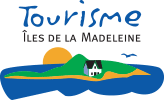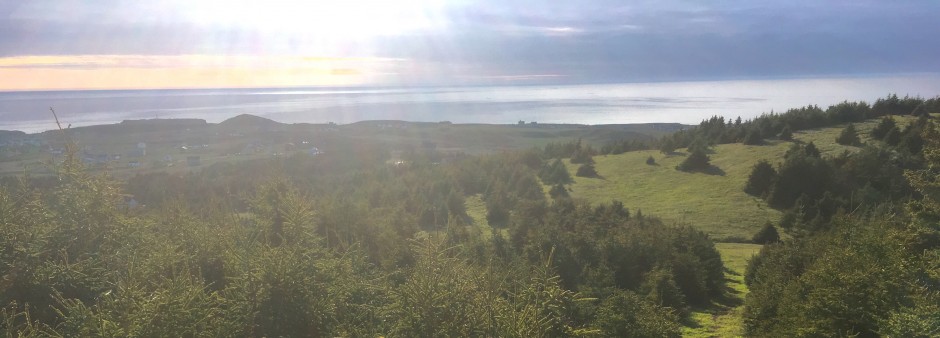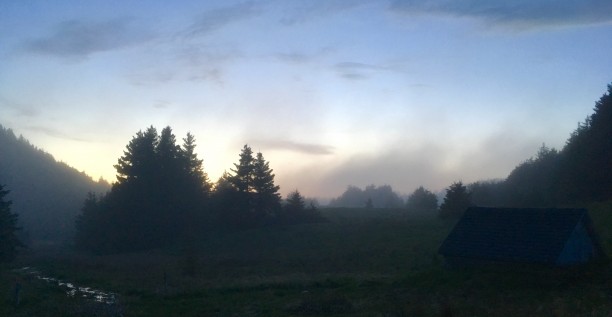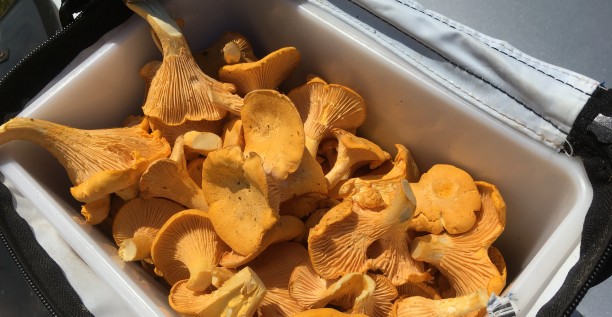


When thinking about the Magdalen Islands landscapes, the imagination goes first to the 300 kilometres of sand dunes, the small fishing ports, the red cliffs overlooking the sea and lagoons. But the Islands are also the host of singular forests, isles of woods, and trees deeply rooted in our land.
Forest stretches here and there over the rocky islets, complementing the colourful scenery of randomly scattered houses. Trees are at times proudly planted and standing straight, elsewhere stunted and wind-swept, echoing the angle of sunbeams. Our trees are no giants, but they have character!

The forest cover spreads mostly over the heart of Cap-aux-Meules island, and on the western portion of Havre-Aubert island. Let's not forget that before human occupation and colonization, the archipelago was once mainly composed of woodlands. Nowadays, the forest cover is limited to a quarter of the territory and reforestation efforts have been undertaken. Barely touched by human occupation, the ecological reserve of Brion Island serves as a hopeful reminder of earlier times with its trees covering 70% of the land.
The forest plays an important environmental role in the Magdalen Islands, as it both protects the territory against wind and water erosion and facilitateswaterregulation, filtration and catchment.
Once fall starts to settle on the Islands and the winds start to turn, we tend to seek shelter from both the brisk weather and the remnants of the summer crowds and excitement. The woodlands become the perfect sanctuary. Even though the northern boreal forest of the archipelago shows little diversity, it still abounds with trails to explore and delicacies waiting to be carefully picked. From mid-summer onwards, many islanders go back to their secret wild mushroom cache to gather chanterelles, American ceps and various milk-caps.

Numerous hiking trails go through our gorgeous woodlands, many of which open on some of the most stunning vistas of the Islands. This network of paths includes the Buck Park Trail running from the forest to the lakes, the Cap-Rouge Trail going from the marsh to the lagoon through the forest, and the “Bouillée de bois” Trail, where most of the Islands' boreal flora can be observed to fully sample the local biodiversity.
When we head for the woods, there's this desire to briefly keel the sightline over. This newly gained perspective is essential in a living environment where we constantly gaze at the vastness of the sea. Getting ever-so-slightly lost in the woods makes for a narrower, more focused field of vision. From hiking to cross-country skiing, it's a way for islanders to deepen their roots in this speck of land adrift in the Saint Lawrence Gulf. It fills our need for verticality in a world happy to make do without the skyscrapers of the continent. But most of all, it's a reassuring reminder of how we can still wander within and wonder at the Magdalen Islands.